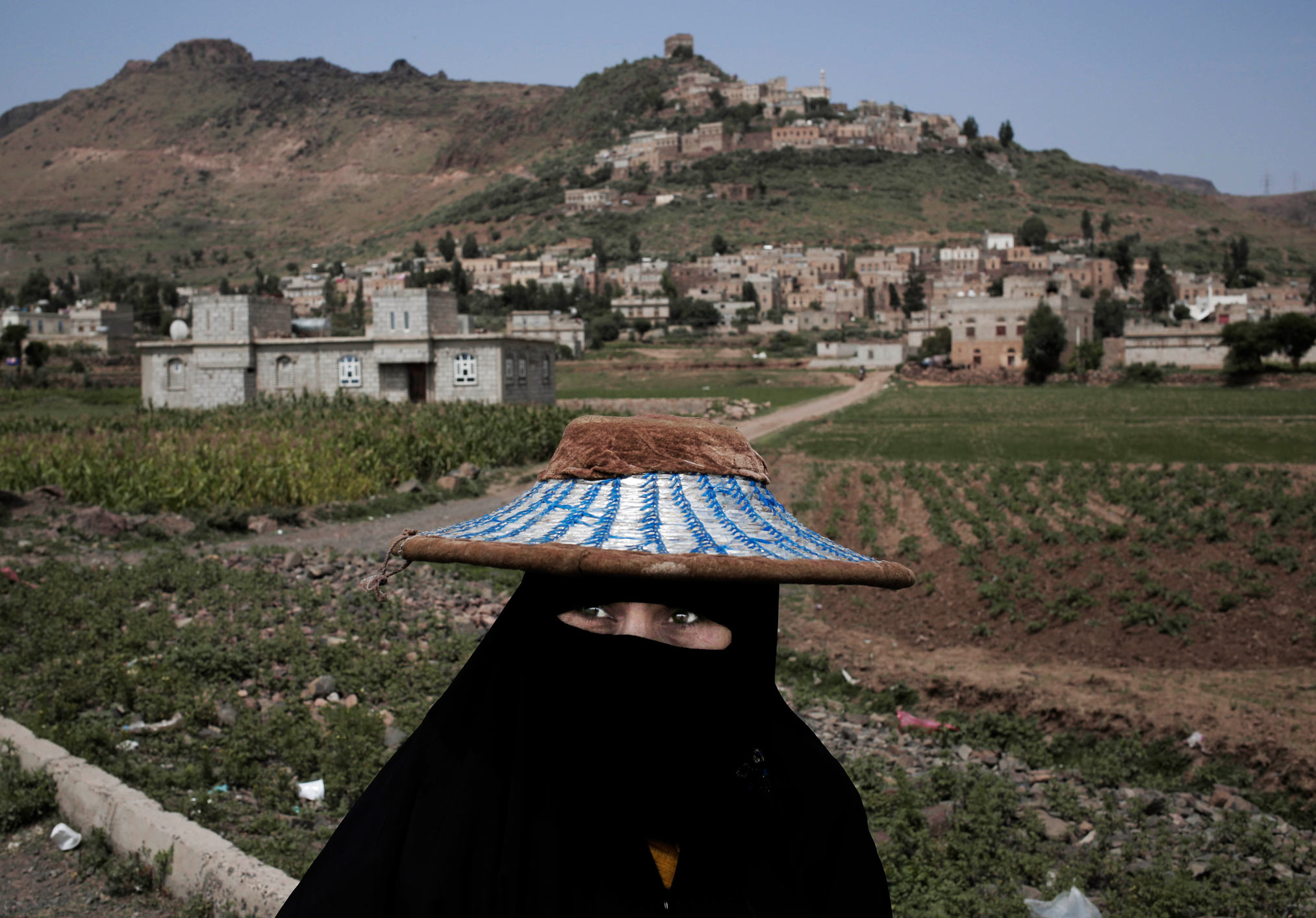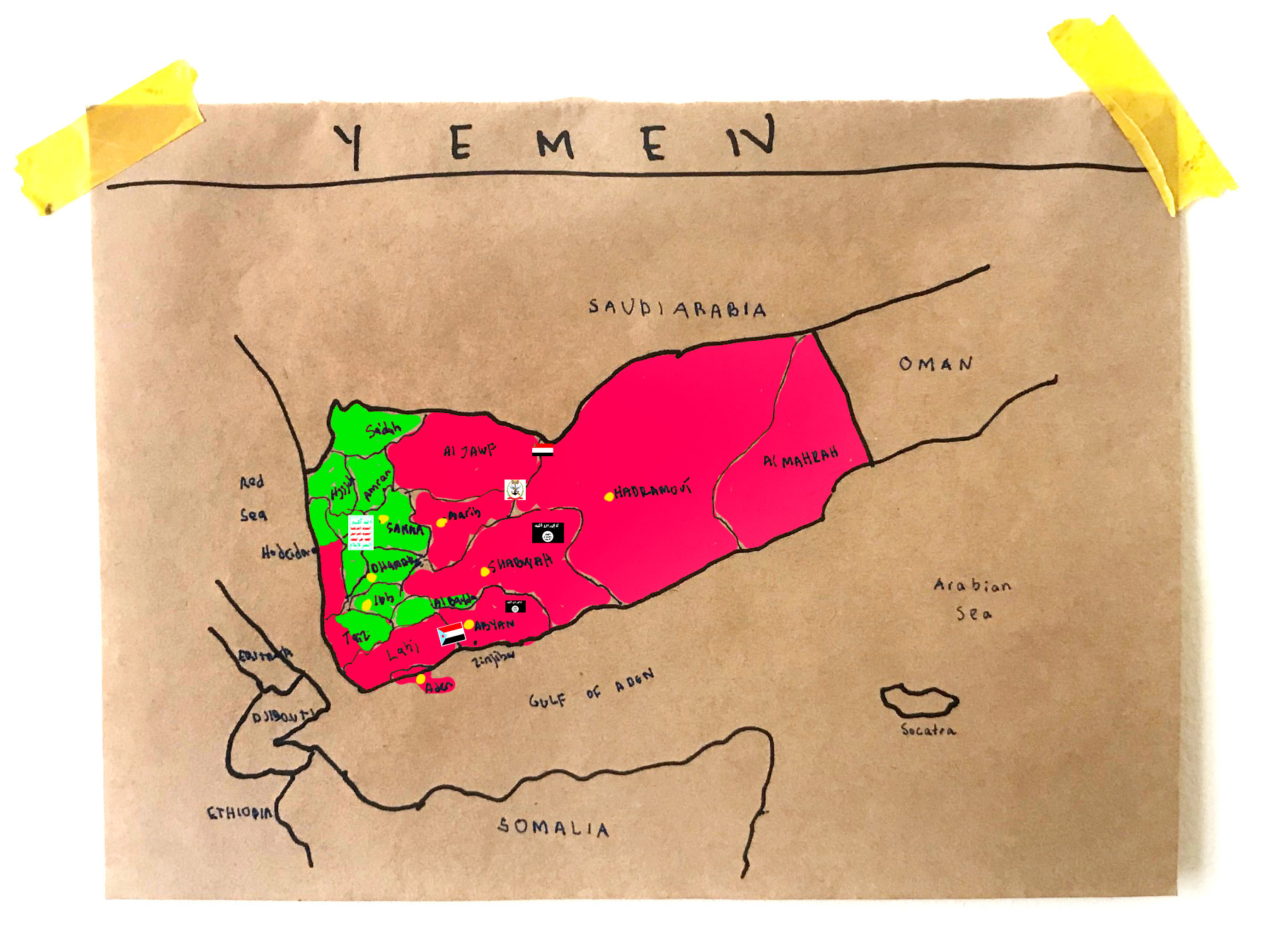Postcards from Yemen

A Yemeni farmer lounged on the ground by the side of the road, gazing at the beauty of the green mountain landscape, where the terraces were planted with corn, barbary figs and qat. Absorbed in contemplation, he didn’t move or react to any noise, a world away from the war tearing apart his country.
In travels across Yemen, these “in-between” moments are found everywhere _ Yemenis fitting their normal lives in between the destruction wreaked by four years of civil war.
That destruction has been terrible, with starving children, families driven across the country to seek safety, homes, schools and hospitals flattened, rampant militias inflicting bloodshed and torture. The country is split between a north held by Shiite rebels known as Houthis and a south held by forces loyal to the government and the Saudi-led coalition that supports it.
Shabwa, Yemen Ibb, Yemen
But on both sides of that divide, Yemenis deal with the chaos in very similar ways and press ahead with their lives. Amid the conflict, it is easy to forget that _ and forget how stunningly beautiful the country is with its majestic mountain landscape. In the south, the mountains are harsh, barren and dry. Crossing north, the landscape transforms. The temperature drops a few degrees. The mountains are steeper and are wet, lush and green, watered with monsoon rains.
Yemen’s roads are arduous. A route that should take two hours can take 14 because of bad roads and the need to avoid battle zones and land mines. Along the highways are the tattered and abandoned remains of advertising billboards, a small reminder of the ruined economy.
Shabwa, Yemen Ibb, Yemen
In the south, the many armed factions make their presence known with slogans painted along the roadsides. On the bare rockface of one hill in Shabwa province was spray-painted a flag of the once-independent South Yemen with a slogan calling for separation once more: “Yes to the Liberation of the South.”
Next to it, someone else has added their own sign of allegiance, the black flag of al-Qaida, with a _ helpful? _ message to passing drivers: “The Organization of al-Qaida: Have a Safe Trip.”
Once north, there is only one voice on the walls: constantly repeated in red, green and white paint, the Houthis’ trademark chant, “God is great. Death to America. Death to Israel. Curse the Jews. Victory to Islam.”
The in-between moments can be very small. Like a man in the Houthi-held town of Ibb who drove a truck whose roof was crumpled in, nearly smashed on top of him. He laughed, as if knowing how ludicrous it looked. The image was mirrored in the south by a trucker driving a vehicle so damaged it seemed incomprehensible that it still moved., Discarded vehicles, damaged by accidents or the war’s violence, are strewn everywhere on roadsides. But they are abandoned only after Yemenis squeeze whatever life they can out of them.
In government-controlled Marib, an ice-cream vendor circulated on a bicycle, playing a recording of a bell jingling to draw customers. There were no children around, but some militiamen _ AK-47s slung over their shoulders _ stopped him to buy some. The gunmen sat in the bed of a pickup, slurped their ice cream and then smoked cigarettes. Elsewhere, local residents picnicked, swam and took selfies at the reservoir at Marib Dam.
This map shows the route taken during an AP investigation in Yemen in 2018.(AP Graphic/Nariman El-Mofty)
Women carrying out chores, men working or watching flocks are seen everywhere along the drive, north or south. As are children. In Ibb, a group of boys posed outside an abandoned van they like to play in. They stood proud in a startling array of outfits _ one boy in traditional robes, another in a black pants and a black button-down dress shirt, neatly tucked in as if he were about to visit relatives, another in an almost hip maroon blazer.
The dilapidated husk of the van behind them had four flat tires half sunk in the dirt, a tarp tied over the roof to keep off the sun. Names were scrawled on the sides _ Murad, Youssef, Arafat _ left by boys with nothing to do while whiling away hours. On an interior wall of the vam was plastered a poster of UNICEF, one of the international agencies struggling to help Yemen’s children.
Stuck on the van’s door was a tattered, worn-away propaganda poster, commemorating Sept. 21, 2014, the day the Houthis took over the capital Sanaa, the opening shot in the civil war. Its slogan, once defiant and now torn in half, proclaimed, “Revolution in the Face of Aggression!”
Marib, Yemen Ibb, Yemen
Marib, Yemen Ibb, Yemen
Bayda, Yemen Ibb, Yemen
Marib, Yemen Ibb, Yemen
Marib, Yemen Ibb, Yemen
Shabwa, Yemen Ibb, Yemen
Shabwa, Yemen Ibb, Yemen
Marib, Yemen Ibb, Yemen
Shabwa, Yemen Ibb, Yemen
Marib, Yemen Sanaa, Yemen
Marib, Yemen Bayda, Yemen
Bayda, Yemen Marib, Yemen
Marib, Yemen Ibb, Yemen
Text from the AP news story, Photographing Yemenis’ in-between moments amid civil war, by Nariman El-Mofty.
Visual artist and Journalist






